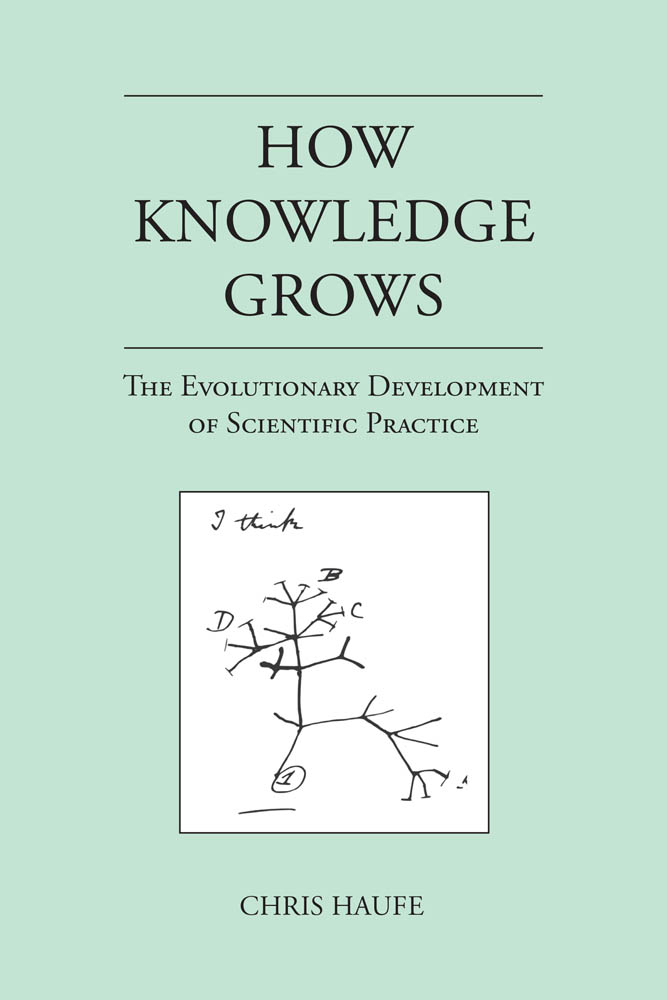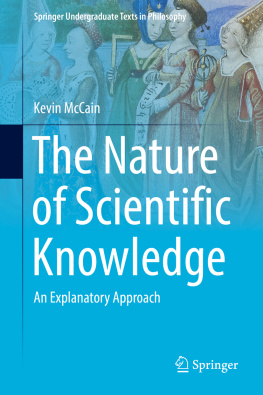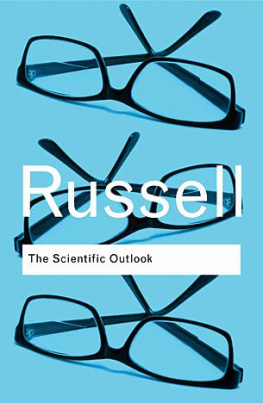Contents
List of Figures
List of Table
Guide
Pagebreaks of the print version

How Knowledge Grows
The Evolutionary Development of Scientific Practice
Chris Haufe
The MIT Press
Cambridge, Massachusetts
London, England
2022 Massachusetts Institute of Technology
This work is subject to a Creative Commons CC-BY-NC-ND license. Subject to such license, all rights are reserved.

The MIT Press would like to thank the anonymous peer reviewers who provided comments on drafts of this book. The generous work of academic experts is essential for establishing the authority and quality of our publications. We acknowledge with gratitude the contributions of these otherwise uncredited readers.
Library of Congress Cataloging-in-Publication Data
Names: Haufe, Chris, author.
Title: How knowledge grows : the evolutionary development of scientific practice / Chris Haufe.
Description: Cambridge, Massachusetts : The MIT Press, [2022] | Includes bibliographical references and index.
Identifiers: LCCN 2021057609 | ISBN 9780262544450 (paperback)
Subjects: LCSH: SciencePhilosophy. | ScienceMethodology. | Knowledge, Theory of.
Classification: LCC Q175 .H35198 2022 | DDC 501dc23/eng20220405
LC record available at https://lccn.loc.gov/2021057609
d_r0
for Philip Kitcher, veteran
Contents
List of Figures
The directionality of science. Each graph plots epistemic well-foundedness as a function of time under different types of pressures. Pseudodirectionality: (a) the history of science is actually non-directional; (b) after Revolution 1, the historical development of ideas is depicted in a way that depicts current views as directly related to some previous views; (c) after Revolution 2, newly adopted views are depicted as direct descendants of different previous views; as in (b) and (c), overall epistemic well-foundedness might decrease from one revolution to another. Sociocultural Directionality: scientific knowledge is responding to pressures that might vary orthogonally to epistemic well-foundedness, which allows it to exhibit a range of relationships to epistemic well-foundedness: (i) flat; (ii) increase; (iii) decrease. Epistemic Directionality: scientific knowledge, responding to epistemic pressure, exhibits a consistent rise in epistemic well-foundedness.
Orrs (2005b) distribution of fitnesses (top). Compare with Holtons (1962) zeroeth-order approximation for a model of research in a specified area (bottom).
A sample walk: successively smaller changes reflect the shrinking supply of beneficial variations as the population approaches the optimum (from Orr 1998).
Upper limit: the range of evolvability (solid circle A) can accommodate 50% of variations of magnitude m, or much lower magnitude n (dotted circles); magnitudes denote the circles radius. Beneficial variation (inside A) is as probable as deleterious (outside A). The phenotypic optimum is at the origin.
Lower limit: the range of evolvability (A) near the optimum. Unlike what is shown in , n-sized variations have only a small chance of evolving, but lower-magnitude v-sized variations have a higher probability.
The population at the center, equidistant from four distinct morphological optima.
The population has moved toward a particular optimum.
A pre-paradigm practice space.
The practice optimum persists as an amorphous cloud of points, gradually gaining definition as the actual historical course of inquiry develops.
From the Review of Particle Physics: A historical perspective of values of a few particle properties tabulated in this Review as a function of date of publication of the Review. A full error bar indicates the quoted error; a thick-lined portion indicates the same but without the scale factor (Zyla et al. 2020, 19). The asymptotic progression of the ranges of values mirrors the progression described by Orr and hypothesized by Holton in his zeroeth-order approximation. See .
The escalation of discovery lines. From Holton (1962).
The relationship between branching and extinction. Adapted from Brandon (2005).
Four models of morphological change (from Eldredge 1971).
Schopfs diagram from the 1972 Models in Paleobiology volume. His caption reads, Dimensions of paleontologically important items with time in seconds and area in m2. Community A is based on an equilibrium model of communities; Community B is based on an historical model of communities.
Actuary table from Raup (1975).
An equilibrium model of the interaction between immigration rates and extinction rates, from MacArthur and Wilson (1963).
Darwins model of the evolutionary process that results in gaps in morphology. Letters indicate names of hypothetical lineages; crosses indicate extinction of a lineage; dotted lines indicate one lineage driving another to extinction.
The fossil record, based on the process depicted in .
Top: Sepkoskis simulation of long-term diversity using a species-as-particles approach. Bottom: The actual Phanerozoic diversity pattern for marine orders (from J. Sepkoski 1978, 233234).
Top left: Actual Phanerozoic diversity for marine families. Bottom left: Sepkoskis simulation of long-term diversity with three interacting but distinct evolutionary faunas (1, 2, 3) and with successively more mass extinction events (A, B, C) (from J. Sepkoski 1984). The top figure is known as the Sepkoski Curve.
List of Table
Summary of Similarities and Differences between Real Clades and MBL Simulated Random Clades (year of publication in parentheses)
Acknowledgments
This book has profited from exchanges with many different people over many years. I first want to acknowledge David Sepkoski, whose conversation during our time together at the University of Chicago had a formative impact on my thinking about the interaction between social and epistemic forces in the practice of science. David carefully read and discussed part II of the book and encouraged me at each step. In so many ways, this book is the long-digested outcome of his influence, both in person and through his superb book Rereading the Fossil Record. I also want to acknowledge the peculiar generosity of John Beatty, who devoted both a week in Vancouver and a week in Cleveland to reading the entire manuscript and giving me the kind of intellectually synoptic feedback that only he can give. John encouraged me to push forward with the project when I considered it too exotic to continue working on. I truly have him to blame for its completion.
Since 2012, I have had numerous discussions about Thomas Kuhns views, their reception, and their plausibility with (mostly) like-minded philosophers of science who thought the time had come for a fresh look at The Structure of Scientific Revolutions. This group includes Paul Hoyningen-Huene, George Reisch, Eric Scerri, Dana Tulodziecki, and Brad Wray. I especially want to thank John Huss for providing invaluable interlocution on everything related to Kuhn and the philosophy of science. Johns willingness to chat provided me with a venue in which to think out loud without fear of reprisal, and with the kind of deep knowledge of Kuhns work that could point me in fruitful directions. Id also like to single out Matthew Slater, who, while being somewhat less interested than myself in the niceties of Kuhn exegesis, provided significant and singularly insightful feedback at each stage of this project.













